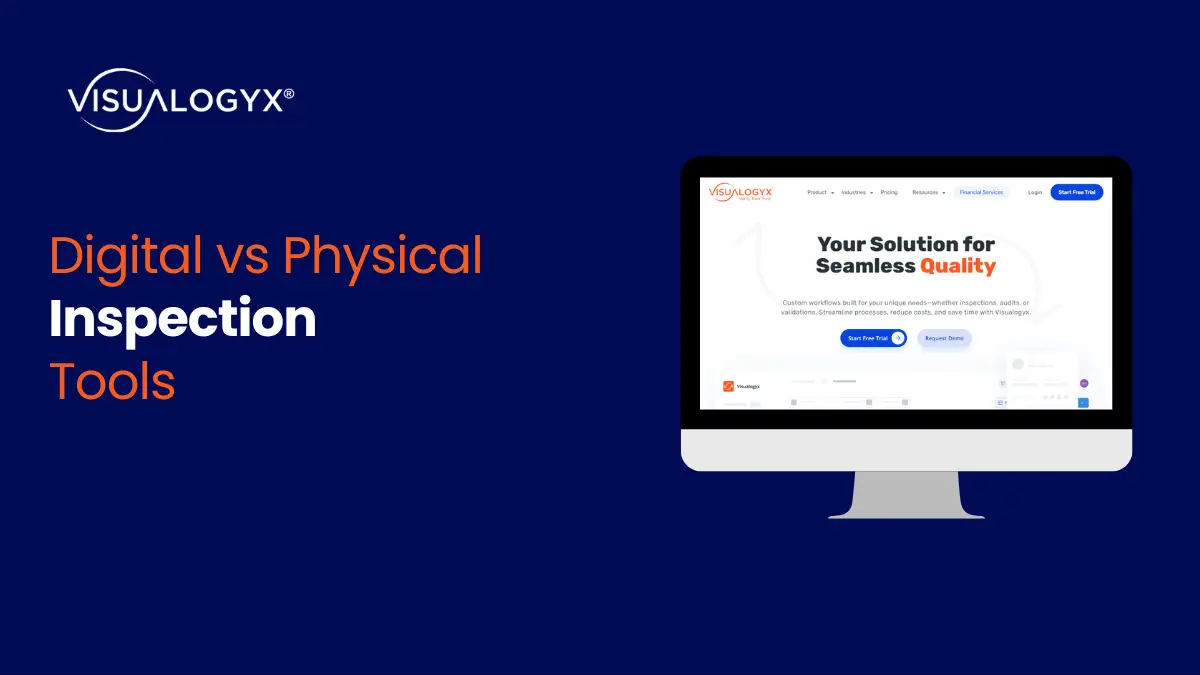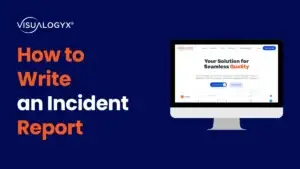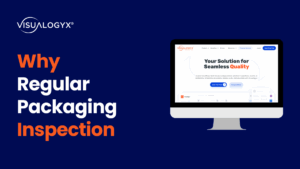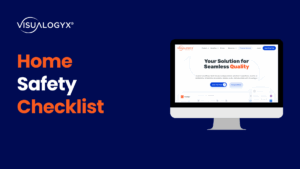In industries ranging from manufacturing to logistics and financial services, inspections are critical for ensuring quality, compliance, and operational efficiency. Traditionally, inspections relied on physical tools and manual processes, but the rise of digital inspection tools has transformed how businesses approach this essential task. This article explores the differences between digital and physical inspection tools, their respective advantages, and why digital solutions like Visualogyx are becoming the preferred choice for modern businesses.
The Limitations of Physical Inspection Tools
Physical inspection tools, such as clipboards, paper checklists, and manual measuring devices, have been the backbone of inspections for decades. While they are simple to use and require minimal training, they come with significant drawbacks:
- Inaccuracy and Human Error: Manual data entry and visual assessments are prone to errors, inconsistencies, and subjective judgments. For example, two inspectors might interpret the same defect differently, leading to inconsistent results.
- Time-Consuming Processes: Physical inspections often involve repetitive tasks like filling out forms, transferring data, and compiling reports, which can delay decision-making and increase labor costs.
- Limited Data Management: Paper-based records are difficult to store, retrieve, and analyze, making it challenging to identify trends or ensure compliance over time.
- Safety Risks: Inspectors often need to access hazardous or remote areas, increasing the risk of accidents during manual inspections.
While physical tools have their place in certain scenarios, these limitations highlight the need for more efficient and reliable alternatives.
The Advantages of Digital Inspection Tools
Digital inspection tools leverage technology to address the shortcomings of physical methods. These tools, such as Visualogyx’s digital inspection platform, offer a range of benefits that make them indispensable for modern businesses:
1. Enhanced Accuracy and Consistency
Digital tools eliminate the risk of human error by automating data collection and analysis. Features like guided checklists, multimedia evidence capture, and real-time data validation ensure that inspections are thorough and standardized.
2. Time and Cost Efficiency
By automating repetitive tasks, digital tools significantly reduce the time required for inspections. For instance, Visualogyx’s mobile app allows field teams to upload data instantly, generate PDF reports on the spot, and share findings in real time, cutting down administrative overhead.
3. Improved Data Management
Digital platforms store all inspection data in a centralized, cloud-based system. This enables easy access, retrieval, and analysis of historical data, empowering businesses to identify patterns, improve processes, and ensure compliance with regulatory standards.
4. Real-Time Insights and Collaboration
Digital tools provide real-time visibility into inspection results, allowing stakeholders to make informed decisions quickly. Visualogyx’s platform, for example, supports offline capabilities, ensuring that inspections can continue even in areas with limited connectivity.
5. Safety and Accessibility
Digital tools reduce the need for inspectors to physically access hazardous areas. Technologies like drones and IoT-enabled sensors can perform inspections remotely, enhancing safety and efficiency.
Key Features of Digital Inspection Tools
Modern digital inspection tools come equipped with advanced features that set them apart from traditional methods:
- Customizable Templates: Platforms like Visualogyx allow businesses to create custom inspection templates tailored to their specific needs, ensuring flexibility and relevance.
- Multimedia Evidence Capture: Inspectors can attach photos, videos, and annotated documents to their reports, providing a comprehensive record of findings.
- Integration Capabilities: Digital tools can integrate with other business systems, such as asset management or compliance software, to streamline workflows and enhance data synchronization.
- AI-Powered Analytics: Advanced platforms use artificial intelligence to detect anomalies, predict defects, and prevent future issues, enabling proactive quality management.
Digital vs Physical Inspection Tools: A Comparison
| Criteria | Physical Tools | Digital Tools |
| Accuracy | Prone to human error and inconsistencies | Automated, standardized, and precise |
| Efficiency | Time-consuming and labor-intensive | Fast, automated, and cost-effective |
| Data Management | Paper-based, difficult to store and analyze | Cloud-based, centralized, and accessible |
| Safety | Requires physical presence in hazardous areas | Enables remote and safer inspections |
| Scalability | Limited by manual processes | Easily scalable with cloud-based systems |
Why Visualogyx Stands Out
Visualogyx is a leader in digital inspection and audit management, offering a comprehensive platform designed to meet the needs of diverse industries. Here’s what sets Visualogyx apart:
- KYPiT Technology: Visualogyx’s KYPiT technology detects potential fraud or tampering, ensuring data integrity and compliance.
- Instant PDF Reports: The platform generates professional, customizable reports instantly, saving time and improving communication.
- Offline Capabilities: Inspections can be conducted in remote areas without network connectivity, with data syncing automatically once reconnected.
- Affordable Pricing: Visualogyx offers a pay-as-you-go pricing model, making it accessible for businesses of all sizes.
Conclusion
While physical inspection tools have served industries well in the past, the limitations of manual processes make them less viable in today’s fast-paced, data-driven world. Digital inspection tools, like those offered by Visualogyx, provide a more accurate, efficient, and scalable solution. By adopting digital tools, businesses can not only improve their inspection workflows but also gain a competitive edge in their respective industries.
For organizations looking to modernize their inspection processes, Visualogyx offers a free trial to experience the benefits firsthand. Transitioning to digital inspections is no longer just an option—it’s a necessity for staying ahead in an increasingly competitive market.




